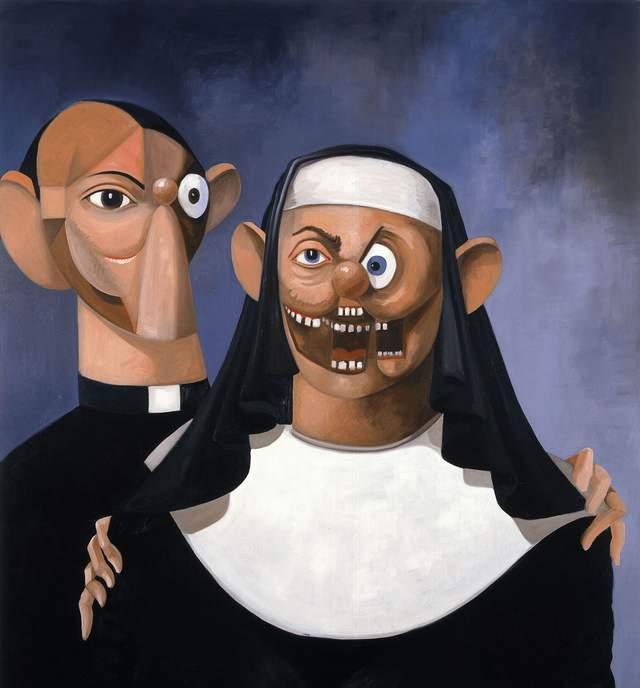Wen | Zhang Shule (Columnist of People's Daily And People's Post and Telegraph, Observer of Internet and Game Industry)
Why is NFT exploding in the art world?
Why is China's digital collection not as popular as abroad?
After the NFT explosion, how can it continue to be popular?
These three NFT questions, the text gives you the answer.

What is the hottest digital technology concept since 2021 after the metaverse?
Undoubtedly, it is an NFT (non-homogeneous token), and the popularity continues to this day.
On January 23, China ushered in the first auction of the automotive industry NFT, and the Roewe Automobile NFT digital art collection was auctioned at a price of 1 million yuan.
Previously, Ali, Tencent, JD.com, Bilibili and other Internet giants have also begun to lay out NFTs, and have launched digital collectible platforms.
The upcoming Winter Olympics have added "a fire" to the NFT, and enterprises such as ANTA and China Sports Industry have successively launched digital collections of the Winter Olympics, and even set off a boom in the A-share market, and the concept of digital collections has ushered in a wave of gains.
According to a report by market research agency Qinalysis, the size of the NFT market has reached at least $26.9 billion in 2021, or about 170 billion yuan.
Is NFT really worth being so hot?
In this regard, Chen Peijun, a reporter from the Southern Metropolis Daily, had an exchange with Shule, and poor Dao thought:
Foreign countries are collectibles markets, and China is souvenir markets.
So NFTs and digital collections, the same roots, but have embarked on two tracks.
The magic of NFTs comes from the only one.
But uniqueness does not represent value.
As a non-homogeneous token that can circulate assets online, NFTs themselves are the opposite side of the blockchain and Bitcoin.
In other words, NFTs are similar to cultural relics, each one is different, there is only one genuine thing in the world.
Perhaps it is precisely based on this incomplete metaphor that the initial application scenarios of NFT and Bitcoin are appropriately set sail from the perspective of art and tokens.
But the NFT essentially acts as a notary office, an appraisal document, determining the composition of jade and gold, the authenticity of calligraphy and painting antiques, etc., and may even be a dynamic personal state.
But now it has become a high-premium commodity, and its own bubble is indeed prone to many misreadings.
Domestic and foreign heat on NFTs is completely different.
The appearance of domestic NFTs in the name of digital collections is itself a qualitative rejection of secondary transactions at the request of supervision. Without a secondary transaction, it is difficult to be hyped into a sky-high price.
Therefore, at present, most of the domestic NFTs appear as a kind of marketing companion products, and even as "gifts" of some large manufacturers.
In terms of ecology, the Internet cultural and creative industries and NFTs have a natural proximity.
Because of this, domestic Internet manufacturers and cultural and creative enterprises do not attack digital collections, which means insufficient strength, and digital collections themselves are easy to stimulate users' freshness and curiosity about such objects.
Especially the Z generation, who lack interest in culture but are full of interest in cultural creativity.
As a channel for further communication with Generation Z, NFTs essentially have similar motives to the previous blind boxes, national tides and other outlets.
At a time when the NFT industry is in full swing, it is not difficult to distinguish between the "pie" and the "trap".
Whether it is an NFT that relies on physical objects or an NFT that is a digital work itself.
Its real value comes from the artistry or uniqueness of the creation itself, and creativity is where the value lies, not the so-called only.
Based on this qualitative, NFT, regardless of the form of expression, is actually a collectible category, and it is often the best to use the traditional collectibles market model to define the pie and trap.
The development of NFTs, in fact, is now a lot of shortcomings under the fire.
Take out an object (real or virtual) and become the era of NFT, which will eventually pass.
After all, this simple labor and tulip fever cannot last without the real value of the foundation and the endorsement of the foundation.
At that time, it was the real brain hole of the NFT that was formed, forming a golden age of cross-industry, cross-field, brain hole and true value.
However, at present, the domestic NFT is basically limited to some areas of artistic creation at the marketing level, and it is difficult to popularize, few people know, and there is a lack of display scenes.
How will the future be broken?
Perhaps, it is still necessary to give it real creative value, to become a digital cultural creation rather than a digital tulip.